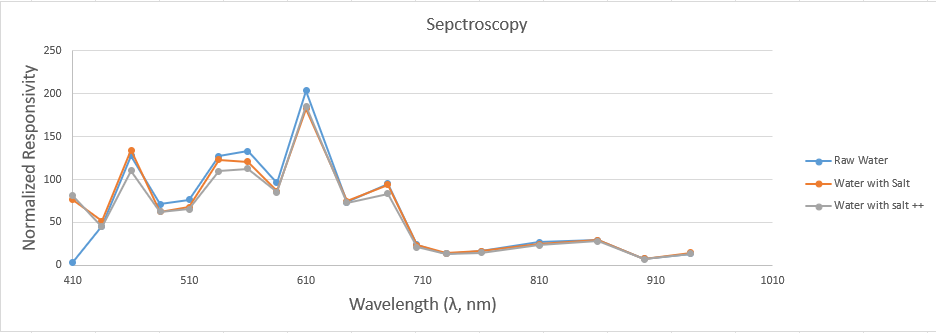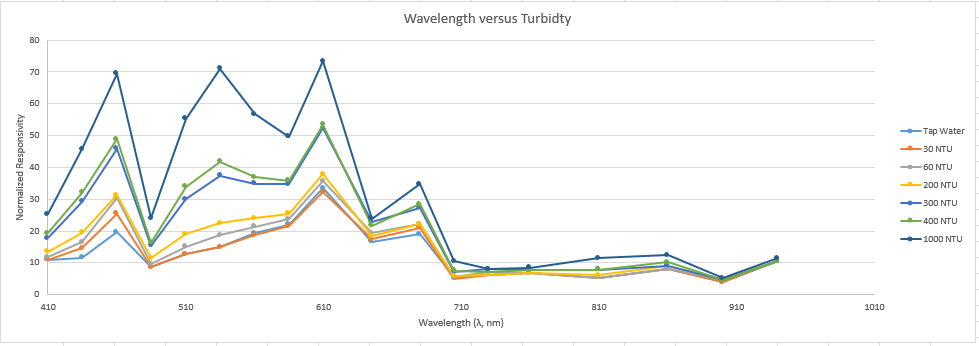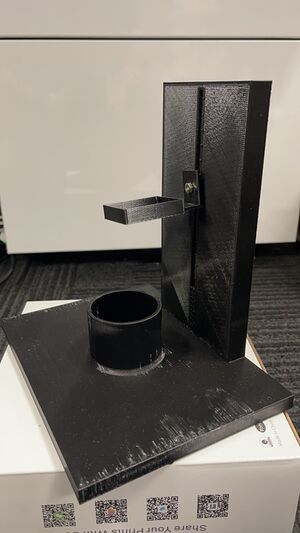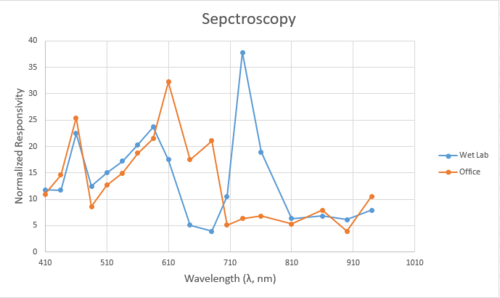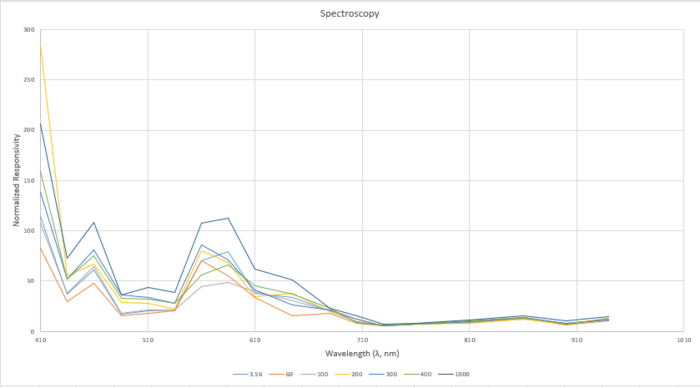Difference between revisions of "Spectrophotometer"
| Line 2: | Line 2: | ||
== 10/01/2023 == | == 10/01/2023 == | ||
| − | Firstly, we hava come out an initial design for holding the sensor, and we use the clip to mount it to a vertical surface to do some preliminary tests. | + | Firstly, we hava come out an initial design for holding the sensor, and we use the clip to mount it to a vertical surface to do some preliminary tests.A black cup is 3D printed to store the water for measurement purpose. |
{| | {| | ||
| Line 12: | Line 12: | ||
It is good to know what roughly the spectroscopy for the water would be under low turbidty level. It can be seen that the sensor didn't receive much reflection for frequency between 710nm and 940nm. | It is good to know what roughly the spectroscopy for the water would be under low turbidty level. It can be seen that the sensor didn't receive much reflection for frequency between 710nm and 940nm. | ||
| + | == 25/01/2023 == | ||
| + | After the first design, we have come out some updated version for the stand that can hold the sensor instead of mounting to a cardbox. Now both the sensor and cup can be located in fixed position.And we have changed the colour of both cup and stand to be black to minimize the potential background noise. | ||
| + | |||
| + | This time we have using some different turbidty solution to measure the spectroscopy at each turbidty level.It can be seen that some correlation might exist at certain frequency (such as 610nm). | ||
| + | |||
| + | {| | ||
| + | |- | ||
| + | | [[File:Spectroscopy - 250123.png|1000px|thumb]] | ||
| + | | [[File:Case 2.0.jpg|thumb]] | ||
| + | |} | ||
| + | |||
| + | == 01/02/2023 == | ||
| + | |||
| + | Today,we bring all the equipment to the wet lab and would like to test again with same turbidty solution, while we have found something interesting: | ||
| + | |||
| + | [[File:Spectroscopy - 010223.png|500px|middle]] | ||
| + | |||
| + | It can be seen that large variation existed for the same measurement sample. We start thinking this might because of the light problem as the light in two rooms are different. And for now we just take one measurement reading with all LEDS on the sensors once to obtain the data. With strong light, the sensor might not be able to receive the correct reflection from the surface. So we need to get some improvements for our code to count for the background noise effect. | ||
| Line 17: | Line 35: | ||
We have obtained some result for different turbidity level as shown below: | We have obtained some result for different turbidity level as shown below: | ||
| − | [[File:Spectroscopy - 140223.png| | + | [[File:Spectroscopy - 140223.png|700px|middle]] |
== Existing problems == | == Existing problems == | ||
Revision as of 02:34, 17 February 2023
We have come up with a great idea to implement a low-cost spectroscopy sensor to measure various water quality parameters. The Sparkfun AS7265x spectroscopy sensor is introduced here (around AUD 60-100). It has three LEDS (VIS,UV,IR) which can measure the intensity for the wavelength ranging from 410nm to 940 nm. We would like to investigate any potential application with this sensor...
10/01/2023
Firstly, we hava come out an initial design for holding the sensor, and we use the clip to mount it to a vertical surface to do some preliminary tests.A black cup is 3D printed to store the water for measurement purpose.
It is good to know what roughly the spectroscopy for the water would be under low turbidty level. It can be seen that the sensor didn't receive much reflection for frequency between 710nm and 940nm.
25/01/2023
After the first design, we have come out some updated version for the stand that can hold the sensor instead of mounting to a cardbox. Now both the sensor and cup can be located in fixed position.And we have changed the colour of both cup and stand to be black to minimize the potential background noise.
This time we have using some different turbidty solution to measure the spectroscopy at each turbidty level.It can be seen that some correlation might exist at certain frequency (such as 610nm).
01/02/2023
Today,we bring all the equipment to the wet lab and would like to test again with same turbidty solution, while we have found something interesting:
It can be seen that large variation existed for the same measurement sample. We start thinking this might because of the light problem as the light in two rooms are different. And for now we just take one measurement reading with all LEDS on the sensors once to obtain the data. With strong light, the sensor might not be able to receive the correct reflection from the surface. So we need to get some improvements for our code to count for the background noise effect.
16/02/2023
We have obtained some result for different turbidity level as shown below:
Existing problems
The data that obtained from spectroscopy sensor is not constant each time.
For similar Turbidty level, the intensity at some specfic wavelength could varied hugely (roughly double)
